“The simple fact of existence, of being aware that you are aware; this to me is the most astounding fact.” -William Hurt
There was so much that happened this past week on Starts With A Bang, from eruptions to bad science reporting to black holes and more, that we couldn't help but share so much with you! Just in the last seven days, we've taken on the following:
- Why are all the planets in the same plane? (for Ask Ethan),
- An unforgettable time-lapse volcano,
- Reverse-pointillist art (for our Weekend Diversion),
- The largest star in the Universe (for Mostly Mute Monday),
- The LHC made simple,
- The first rule of teaching science, and
- How do black holes get so big, so fast? (for Throwback Thursday).
In addition, I've also -- on special invitation -- begun contributing (and adding legitimate, quality science) to Forbes, where I've written two pieces so far:
That’s an awful lot, but now you've got even more chances to chime in. Let’s look at what you said on this edition of our Comments of the Week.
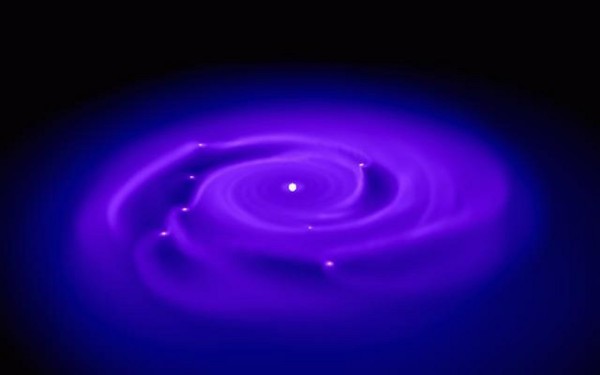 Image credit: Thomas Quinn et al., Pittsburgh Supercomputing Center, via http://www.psc.edu/science/2003/quinn/how_to_cook_a_giant_planet.html.
Image credit: Thomas Quinn et al., Pittsburgh Supercomputing Center, via http://www.psc.edu/science/2003/quinn/how_to_cook_a_giant_planet.html.
From David Whitlock on the plane of our Solar System: "What about dark matter? Once the dust and gas get accreted into planets, they should be able to scatter dark matter gravitationally. Or at least scatter a fraction of it. That scattering should happen in galaxies too."
The dark matter does get scattered, in the sense that it very much interacts gravitationally with the normal matter. As the normal matter is in clumps, the dark matter comes in and can be scattered greatly as well, by any star, planet, or other large quantity of mass.
But the question you've got to ask yourself is the following: what effect should this have?
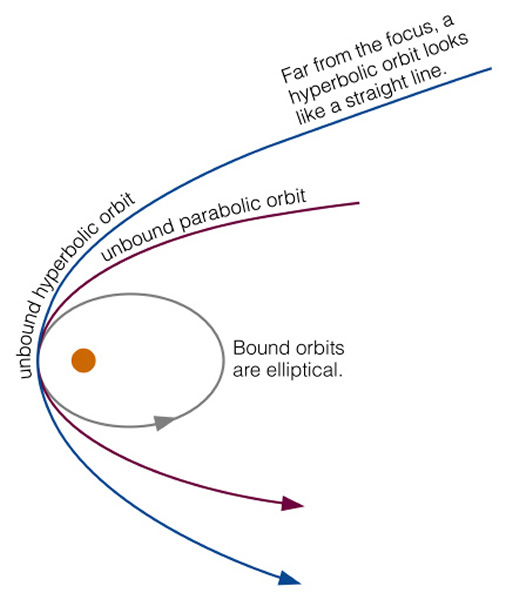 Image credit: J. Scott Shaw of Georgia, via http://www.physast.uga.edu/~jss/1010/ch4/ovhd04.html.
Image credit: J. Scott Shaw of Georgia, via http://www.physast.uga.edu/~jss/1010/ch4/ovhd04.html.
The dark matter is already very virialized, in a giant halo around the galaxy with a radius of nearly (and perhaps even as great as) a million light years. And for the most part -- to within only a few km/s -- interacting gravitationally like this won't even change the dark matter's galactocentric speed, only its direction.
So sure, there's a small amount of scattering that happens when a dark matter particle gets close to a massive object. But this happens only rarely (on average), and even when it does happen, it affects minimal changes to the dark matter halo. So it happens, but it's ineffectual.
Image credit: Cesar Cantu, via https://www.facebook.com/cesar.quiroga.75685?fref=ts.
From MP Marara on the Colima volcano's eruption: "The phenomenon of volcanic lightning is truly fascinating, but I’d like to know, does volcanic lightning occur in all volcanic eruptions or does it randomly occur in some volcanic eruptions, and how often does it occur?"
It doesn't occur in every volcanic eruption, and it tends to occur towards the beginning, when the eruption is at its fiercest. Think about what you need: ionized particles, turbulent airflow, a large temperature gradient and a large variety of material. When does this occur? At the earliest stages of the eruption, when the most "stuff" is coming out of the volcano with incredible violence. Take a look!
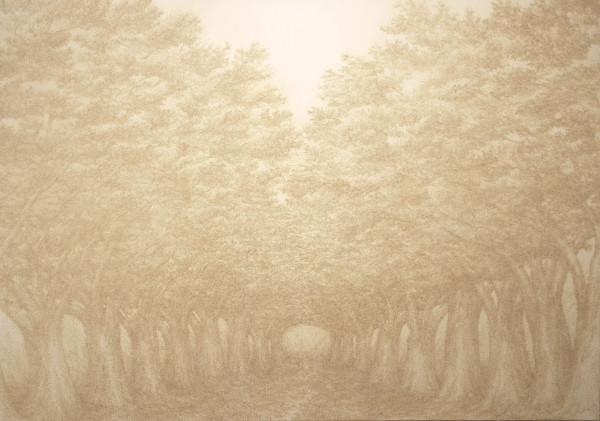 Image credit: Jihyun Park, via http://www.drawingcenter.org/viewingprogram/share_portfolio.cfm?pf=2691.
Image credit: Jihyun Park, via http://www.drawingcenter.org/viewingprogram/share_portfolio.cfm?pf=2691.
From Sandra Yerha on Jihyun Park's art: "It is amazing how an artist can be so creative with such simple concepts and create art that is so remarkable!"
I completely agree; oftentimes, I think that part of creativity is restrictions. If you allow someone unlimited resources, time and freedom to do something, you often wind up with with something that isn't as interesting as a project where either your medium, your equipment, your resources or your time is purposely limited. In the case of Jihyun Park, only being able to burn holes with incense sticks seems to do the trick.
 Image credit: Jihyun Park, working on a reverse-pointillist masterpiece, via http://www.mymodernmet.com/profiles/blogs/jihyun-park-reverse-pointilli….
Image credit: Jihyun Park, working on a reverse-pointillist masterpiece, via http://www.mymodernmet.com/profiles/blogs/jihyun-park-reverse-pointilli….
There are plenty of other examples like this, as xkcd happily points out:
 Image credit: Randall Munroe of xkcd, via https://xkcd.com/1045/.
Image credit: Randall Munroe of xkcd, via https://xkcd.com/1045/.
Pretty bitchin', isn't it? This is part of the reason why, you'll notice, that we restrict ourselves to a maximum of 200 words on Mostly Mute Monday. For someone as long-winded and detail-oriented as myself, that's quite a constraint!
Speaking of that...
Image credit: NASA, ESA, & F. Paresce (INAF-IASF), R. O’Connell (U. Virginia), & the HST WFC3 Science Oversight Committee.
From W Terblanche on the largest star in the Universe: "How long do you think it will take before we discover an even larger star? Will the star we know of as the largest one be able to exist for longer than the sun?"
The major difficulty here is distance, and how maddening it is that not only brightness falls off as the distance squared, but that resolution falls off as distance as well. Let's consider some facts about R136a1, the most massive star we've found so far, and the one shown above:
- It's 256 times the mass and more than 7,000,000 the luminosity of the Sun, but at its present distance -- a mere 170,000 light years away -- it's already a 12th magnitude star. (The naked eye limit is 6th magnitude; the limit with long-exposures with Hubble is around 28th magnitude.)
- But resolution -- even if we can get down to micro-arc-seconds, or a third of a billionth of a degree -- is horrific. With the best adaptive optics and largest telescopes ever, here's what we see for R136a1.
It's remarkable that we can separate this at all, but what if we were talking about a star beyond our local group? Even if we look close by, like in one of the brightest nearby galaxies, Messier 81, we're already talking about a visual magnitude of +22 and a resolution that's seventy times worse than what we can see for R136a1. Considering that this is just 11 million light years away, and the observable Universe extends for tens of billions of light years, we almost certainly don't have the brightest of all.
The point of this is to say that we're limited by our technology, but the earliest, very first stars are probably the biggest and brightest of all. James Webb -- if we're lucky -- may allow us to catch a glimpse of them, even if it won't allow us to see them the same way we can see R136a1. Still, the frontiers are surely going to be pushed back even farther on this front; it's only a matter of time!
From PJ on the LHC and the Higgs: "How long did the Higgs event last for when it was ‘found’?"
Figuring out the lifetime of the Higgs from a single "event" in an accelerator is really, really hard. We can't measure something like a displaced vertex (or time-of-flight), because the displacement is on the order of fractions-of-a-femtometer. Instead, and you're going to hate this, the best estimate of the Higgs' lifetime comes from Heisenberg's Uncertainty Principle: (ΔE)(Δt) ≥ ℏ/2. Since E = mc^2, and the Higgs has a certain mass, we can look at the observed width of the mass (which tells us ΔE) to determine, experimentally, its lifetime, given by (approximately) Δt.
Work this out and you'll find the Higgs lifetime is on the order of 10^-25 seconds, or really, really short. Other particles this short-lived include the W-and-Z bosons, and also the top quark. Everything else, thankfully, lives at least a bit longer.
But yikes, that's SHORT!
From John Nyatschambe on teaching science: "I give credits to Niels Bohr for his contribution in the dual nature of light. Who do you give credit to?"
On the one hand, you've got Newton, who said "light is a ray," and hence a "corpuscle," or a particle. He basically cheated his way through phenomena like diffraction and interference, which requires a wave. But a number of people had this right, and I'd say the biggest ones were:
- Christiaan Huygens, who worked out the wave theory as a contemporary of Newton, which was far superior for a number of applications.
- Thomas Young, who right around 1800 figured out the two-slit experiment, confirming the wave nature of light.
- And finally, and perhaps most importantly, François Arago, who actually performed the crucial experiment proving that light is a wave. (Read the amazing story here; I know it's good because I wrote it!)
After that, Maxwell came along and explained the wave nature of light perfectly, and it was only with Einstein and the photoelectric effect that we truly realized the dual nature of light: it behaves as a wave and a particle, and so do all things.
But those six, in order: Newton, Huygens, Young, Arago, Maxwell and Einstein, were the six who I'd give credit to for understanding the dual wave/particle nature of light. Bohr? He did plenty of great stuff, but let's not give him credit for the work of others.
From Sinisa Lazarek on my new South African (and Zimbabwean) commenters: "Who are all these users from south africa with numbers in their names? They started appearing couple of months ago out of nowhere.. Bots.. or? Ethan?"
Well, it's not me, that's for certain. But they are certainly students almost definitely doing this as part of some assignment. I don't know why and I don't know who is orchestrating this, but I do get occasional flurries like this. I got one a few years ago from a course at West Virginia, and I imagine this is a much larger undertaking. I don't know if it's a professor in particular, a University or even a secondary school, but I see no reason to disallow the comments. They seem like drive-bys, and a few people return to post multiple comments.
Next up, I'm hoping for comments from Kangaroo Island.
I hear that place is really hopping!
And finally, from Omega Centauri about pair-instability supernovae: "I have an addition question regarding the pair-instability supernova. From the virial theorem we would expect that the internal energy of the initial configuration to be half of the (negative) gravitational potential energy. So we would need an additional source of energy to blow the star apart. I presume this comes from fusion."
This is a good point, but remember there's a lot going on here. For one, when we talk about gravitational energy in the virial theorem, we're talking about the difference between empty space and the bound masses we have, and how that compares to thermal (internal) energy. That's what the virial theorem relates. Normally, it's the energy of fusion that provides the radiation that holds a star up against collapse, but when you take that energy away (via the pair instability), there's nothing to stop the collapse.
Now fusion? Sure, that's a great way to release energy. But gravitational collapse... that's the key to higher temperatures, fast. Think about Newton, here, just to make things easy. Imagine you've got a mass of whatever, and it starts to collapse. You've got your gravitational energy, but now we shrink it down, down, down. Here's the formula:
That's it! Gravitational energy can go up in magnitude by a factor of two, or ten, or a hundred... and when it does, wow can you get a lot of thermal energy out! That heat is what triggers the runaway fusion reaction, and then that release -- which is exponentially dependent on temperature -- is what blows the entire star apart.
So yes, fusion, but it is the gravitational collapse that triggers it and that's all-important for the pair-instability (and the no-remnant) piece of it.
Thanks for a great week, all, and see you back here for more wonders of the Universe next week on Starts With A Bang!
- Log in to post comments

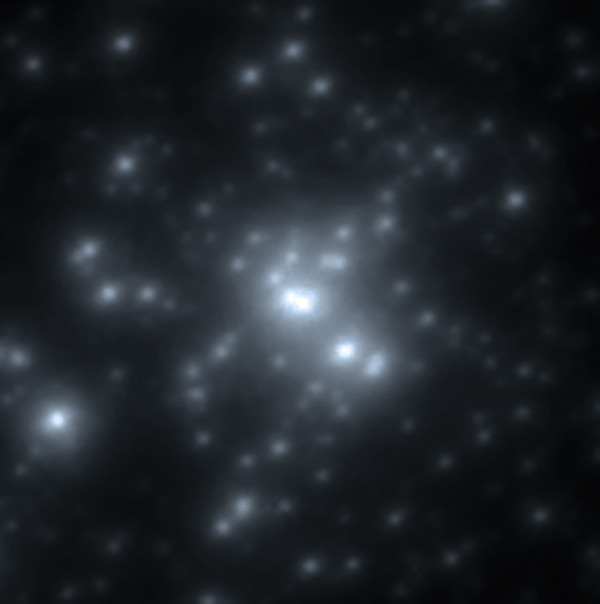
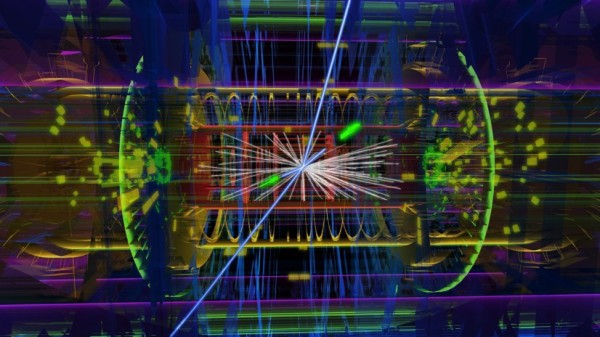
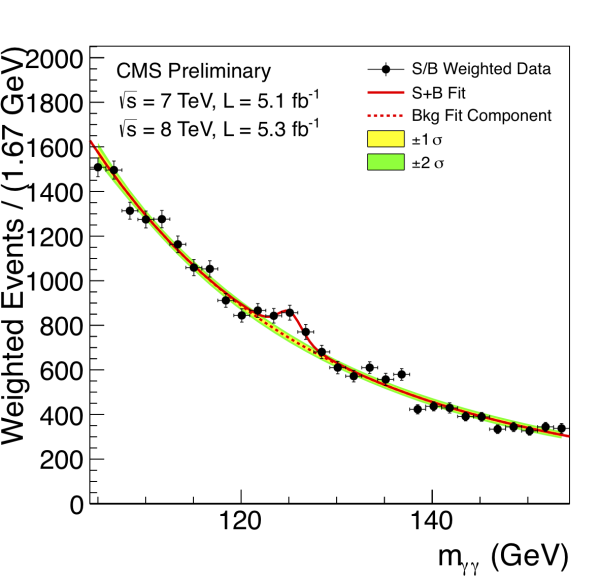
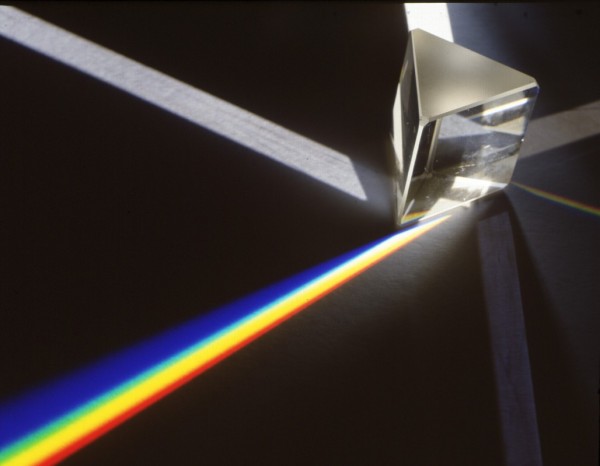
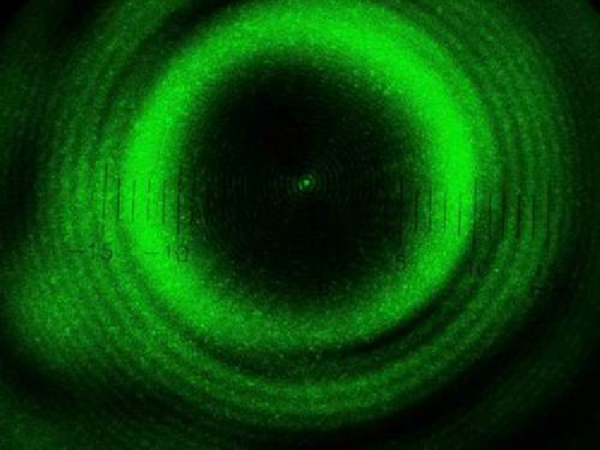
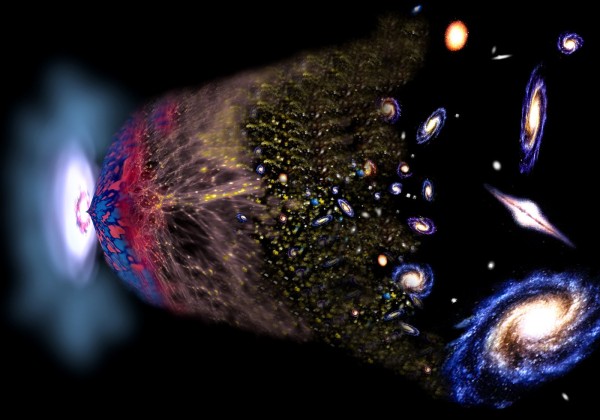

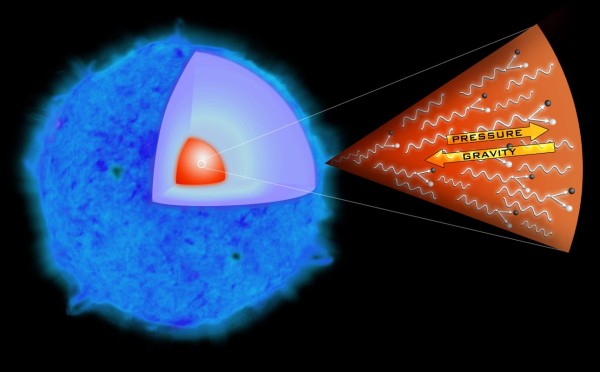

What is the proper definition for a black hole? Is it something other than a huge space vacuum that exists solely to clean everything up? Are there any new theories on what lies on the other side?
What is the proper definition for a black hole? Is it something other than a huge space vacuum that exists solely to clean everything up? Are there any new theories on what lies on the other side?
U14206022
A very interesting article that raises many questions for an amateur astronomer like myself. The most relevant of these questions is, would it be possible for humans to harness the gravitational energy released when the star collapses, i know that the amount of energy given off is vast and we would only need to capture a small percentage of it to power the earth for years, but is it actually possible perhaps not soon but some time in the future. If a near enough star exploded and the energy reached earth could we harness it?
Brian, wouldn't such vast energy so near to Earth have terrible consequences? For example an increase in temperature, or even as drastic as for the Earth to move or shift on its axes? I feel we should look into harnessing the energy of living stars, a similar concept to solar energy.
I think harnessing energy from stars in a similar way to solar power would be a waste. We will not be able to harvest anywhere near enough energy. I think Brian is on the right track by saying that we could collect energy from exploding stars as it will be much more effective, preferably not too close to Earth though as I think Rebecca has a point! You could do a PhD in astrology Brian and give us all answers.
The universe is such a wide and wonderful place!
Everything that exists has its own role to play in the "masterplan". I agree that using the energy released by dying stars can be put to good use. I myself am not an astronomy major, rather a math geek. The chaos and structure of the universe is fascinating! I would like to know more about the process of harvesting the energy, because the only logical thought that forms in my head is based on Transformers the movie.
It's not that.
Definitely not that.
Google it.
This is a very interesting article. I like the idea of harnessing the energy of dying stars. As we only need a fracrion of the energy that is given off to power the earth. I think we can really start to research this topic.
Be careful. Energy from stars or any other resource can be very useful. Talk is cheap, money buys the whiskey. How can we gather/withdraw that energy safely and capture it in a sufficient way. Go back to the drawing board... photosynthesis-GO-MECHANICAL!!!
I agree they can really start to do the research because we sure need an alternative source or energy.
Stars generate powerful magnetic fields on a regular basis. They eject hydrogen into space. To truly harness the power of the Sun, we need to get to the core and extract the hydrogen. This will be a huge boost for energy. Imagine a huge solar power plant x billions, infinite energy and power